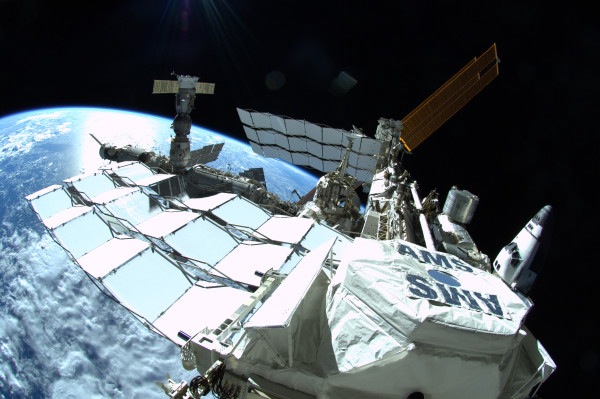
Out of an estimated 100 billion stars in our galaxy, no more than 14 may be made from antimatter. That's the result from a new study that scoured the Milky Way for signs of antistars — which are identical to regular stars save for the fact that they would burn antimatter at their cores.
Though the findings turned up mostly empty this time, researchers haven't yet fully ruled out the existence of antistars, whose presence would change much about our understanding of the universe.
The recent search for antistars can be traced back to 2018, when a $1.5-billion experiment called the Alpha Magnetic Spectrometer (AMS) that's attached to the International Space Station captured a few examples of what might be antimatter.
Related: The 12 strangest objects in the universe
Antimatter is exactly like regular matter but its charge is reversed, so the antimatter equivalent of positively charged protons are negatively charged antiprotons. In this case, AMS detected what looked like antihelium, which has a nucleus composed of two antiprotons and two antineutrons.
Cosmic rays can sometimes hit ordinary matter and produce simple antimatter particles, like antiprotons and positrons — the charge-reversed version of an electron. But no known process can create something complex like antihelium, Simon Dupourqué, a doctoral candidate in astrophysics at the University of Toulouse in France, told Live Science.
That got him and his colleagues wondering: Where exactly could this antihelium have come from? While physicists are reasonably certain that no large pockets of antimatter exist in the universe, some theorists have suggested that bits of the charge-reversed material could have collected into star-like objects, essentially forming antistars.
Get the world’s most fascinating discoveries delivered straight to your inbox.
Antistars would fuse antihydrogen into antihelium to produce light, but they would otherwise look fairly ordinary. "If these objects existed, we could not distinguish them from a regular star," Dupourqué said.
But when antimatter and regular matter meet, they violently annihilate each other, leaving behind nothing but gamma rays. So ordinary matter floating through the cosmos in the form of gas and dust would hit these antistars, generating excess gamma radiation, Dupourqué said.
By combing through data from NASA's Fermi gamma-ray telescope, he and his co-authors uncovered 14 examples of small compact objects shining brightly in gamma rays that didn't show up in other star catalogs, meaning scientists don’t know what they are. That could make them potential antistar candidates. Their findings appeared April 20 in the journal Physical Review D.
The team isn't yet claiming that these are antistars, though. "They are much more likely to be something else," said Dupourqué, such as previously unknown gamma-ray emitters such as powerful pulsars or distant active galactic nuclei. If they were antistars, "it would change the way we think the universe formed," he added.
That's because cosmologists believe that shortly after the Big Bang nearly equal amounts of matter and antimatter were created. These twin materials crashed together into a spectacular spray of energy, leaving behind mainly matter, which was created in slightly higher proportions, according to an explainer from CERN.
Nobody knows how or why more matter was formed, creating what is known as the matter-antimatter asymmetry problem. If antistars existed, it might mean that some of that original antimatter somehow managed to survive for longer than scientists previously thought possible, Dupourqué said.
A great deal more work would have to be done, including follow-up observations with future telescopes, to confirm or rule out the antistar explanation, Vivian Poulin, an astrophysicist at the Montpellier Universe and Particles Laboratory in France who wasn't involved in the research, told Live Science.
Some of the antimatter in the early universe might have existed in large pockets that could have collapsed down into star-like objects, though this is not part of astronomers' standard picture of the moments after the Big Bang, he added.
Originally published on Live Science.

Adam Mann is a freelance journalist with over a decade of experience, specializing in astronomy and physics stories. He has a bachelor's degree in astrophysics from UC Berkeley. His work has appeared in the New Yorker, New York Times, National Geographic, Wall Street Journal, Wired, Nature, Science, and many other places. He lives in Oakland, California, where he enjoys riding his bike.


